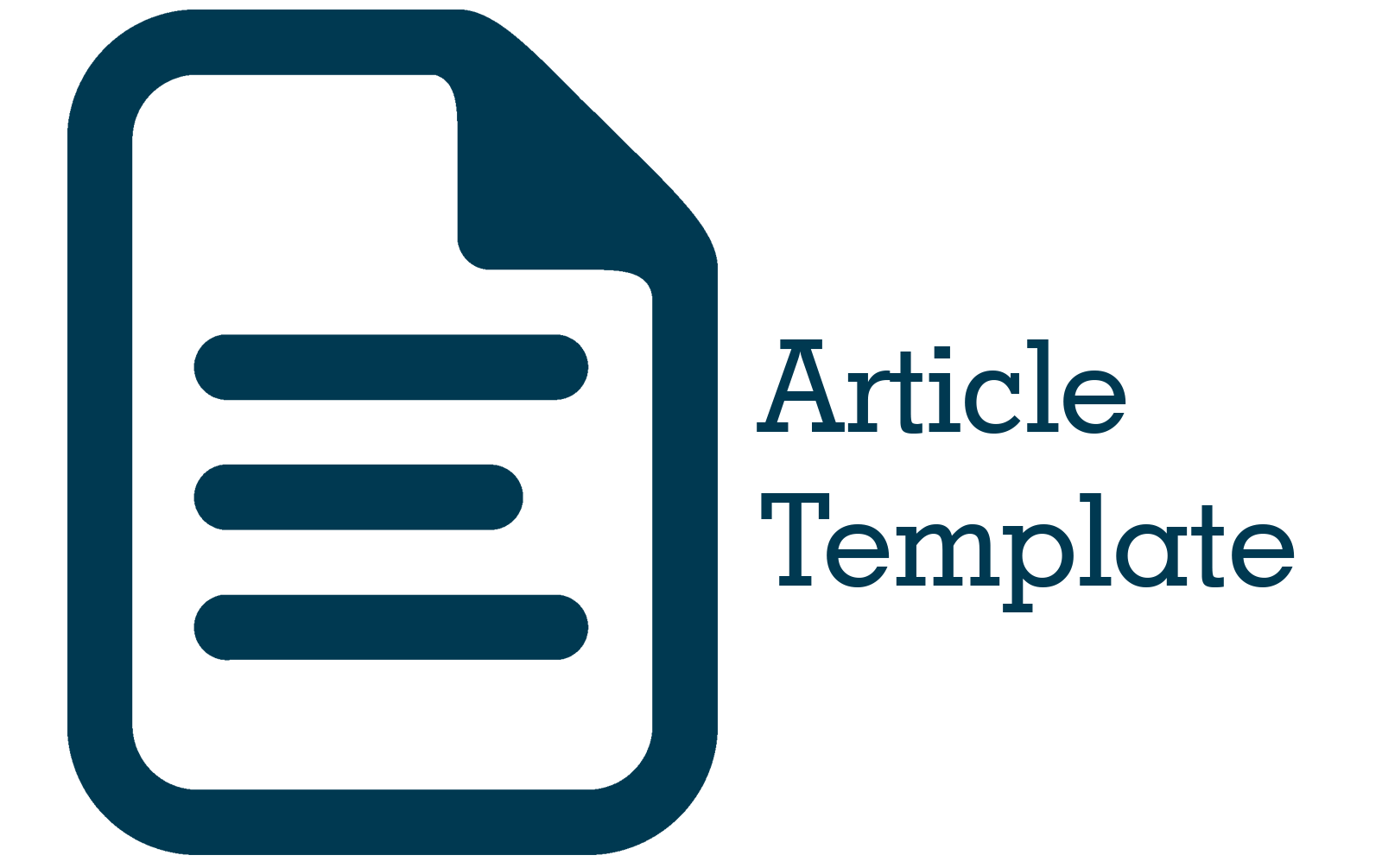Hubungan Obesitas dengan Polycystic Ovarian Syndrome (PCOS) di RSUD Al-Ihsan Provinsi Jawa Barat
Abstract
Abstract. Obesity, a condition with high body fat levels, contributes to various health problems, including Polycystic Ovarian Syndrome (PCOS), an endocrine disorder associated with insulin resistance and hyperinsulinemia. This condition can interfere with reproductive function and results in decreased fertility rates. This study aims to determine the significant relationship between obesity and PCOS at Al-Ihsan Hospital, West Java. This research used a descriptive analytic method with a cross-sectional study design. The sampling technique being used in this research is the consecutive sampling method with a total of 109 patients at Al-Ihsan Hospital, West Java Province in 2023-2024 whose data were taken from patient medical records according to inclusion and exclusion criteria. Data analysis used chi square statistical test. The results of the study showed that of the 109 patients, most had Class I Obesity (34.9%) and 78% were diagnosed with PCOS. The analysis results of chi square statistical test obtained a p-value of 0.001 <0.05 indicating that there was a significant relationship between obesity and PCOS.
Abstrak. Obesitas, kondisi dengan kadar lemak tubuh tinggi, berkontribusi pada berbagai masalah kesehatan, termasuk Polycysic Ovarian Syndrom (PCOS), gangguan endokrin yang terkait dengan resistensi insulin dan hiperinsulinemia. Kondisi ini dapat mengganggu fungsi reproduksi berdampak pada turunnya angka fertilitas. Penelitian ini bertujuan untuk mengetahui hubungan yang signifikan antara obesitas dan PCOS di RSUD Al-Ihsan Jawa Barat. Metode penelitian yang digunakan yaitu deskriptif analitik dengan rancangan penelitian cross sectional. Teknik pengambilan sampel menggunakan metode consecutive sampling dengan jumlah 109 orang pasien di RSUD Al-Ihsan Provinsi Jawa Barat Tahun 2023-2024 yang datanya diambil dari rekam medis pasien sesuai kriteria inklusi dan eksklusi. Analisis data menggunakan chi square. Hasil penelitian menunjukkan bahwa dari 109 pasien, sebagian besar Obesitas Kelas I (34.9%) dan 78% terdiagnosis dengan PCOS. Hasil uji statistik chi square diperoleh nilai p-value sebesar 0,001<0.05 menunjukkan bahwa terdapat hubungan yang signifikan antara obesitas dengan PCOS.
References
[2] WHO | Obesity. WHO [Internet]. 2015 [cited 2016 Jun 30]; Available from: http://www.who.int/gho/ncd/risk_factors/obesity_text/en/
[3] Barber TM, Hanson P, Weickert MO, Franks S. Obesity and Polycystic Ovary Syndrome: Implications for Pathogenesis and Novel Management Strategies. Clin Med Insights Reprod Health. 2019;13:117955811987404.
[4] Anisya V, Graharti R. Policystic Ovary Syndrom: Resiko Infertilitas yang dapat Dicegah melalui Penurunan Berat Badan Pada Wanita Obesitas. Medula. 2019;9(1):267–75.
[5] Zhao H, Zhang J, Cheng X, Nie X, He B. Insulin resistance in polycystic ovary syndrome across various tissues: an updated review of pathogenesis, evaluation, and treatment. J Ovarian Res. 2023;16(1).
[6] Mareta R, Amran R, Larasati V. Hubungan Polycystic Ovary Syndrome(PCOS)dengan Infertilitas di Praktik Swasta Dokter ObstetriGinekologi Palembang. In 2018. Available from: https://api.semanticscholar.org/CorpusID:199619257
[7] El Hayek S, Bitar L, Hamdar LH, Mirza FG, Daoud G. Polycystic Ovarian Syndrome: An Updated Overview. Front Physiol. 2016;7:124.
[8] Hubungan Pola Makan dengan Risiko Terjadinya Sindrom Ovarium Polikistik pada Remaja. Fakultas Kedokteran Universitas Sriwijaya. 2020;Vol. 3
[9] Wahyuni A, Supriyatiningsih, Kusumawati W, Sedah Kirana K, Mayayustika CD. Family history of PCOS, obesity, low fiber diet, and low physical activity increase the risk of PCOS. Jurnal Kedokteran dan Kesehatan Indonesia. 2022;
[10] Nasution Z. Nefropati Diabetik Pada Pasien Diabetes Melitus Tipe 2 Yang Terkontrol dan Tidak Terkontrol: Kajian Terhadap Mikroalbumin Urin Sebagai Marker Nefropati Diabetes. 2013 [cited 2023 Dec 29]; Available from: https://repositori.usu.ac.id/handle/123456789/2931
[11] Irene A, Alkaf S, Zulissetiana EF, Usman F, Larasaty V. Hubungan Pola Makan dengan Risiko Terjadinya Sindrom Ovarium Polikistik pada Remaja. Sriwijaya Journal of Medicine. 2020;3(1):65–72.
[12] Ramezani Tehrani F, Amiri M. Polycystic Ovary Syndrome in Adolescents: Challenges in Diagnosis and Treatment. Int J Endocrinol Metab. 2019 Jul;17(3):e91554.
[13] Olyvia L, Garna H, Sedjati A. Hubungan Asupan Makanan dan Aktivitas Fisik dengan Kejadian Obesitas pada Anak Sekolah Dasar di Kota Bandung. Prosiding Pendidikan [Internet]. 2015;746–52. Available from: https://karyailmiah.unisba.ac.id/index.php/dokter/article/view/1456.
[14] Singh S, Pal N, Shubham S, Sarma DK, Verma V, Marotta F, et al. Polycystic Ovary Syndrome: Etiology, Current Management, and Future Therapeutics. J Clin Med. 2023;12(4):1–33.
[15] Goma EI, Sandy AT, Zakaria M. Analisis Distribusi dan Interpretasi Data Penduduk Usia Produktif Indonesia Tahun 2020. 2021;20–7.
[16] Lin X, Li H. Obesity: Epidemiology, Pathophysiology, and Therapeutics. Front Endocrinol (Lausanne). 2021;12(September):1–9.
[17] Tuminah T, Cusmarih C. Meta-Analysis: Association of Obesity with Incidence of Polycystic Ovarian Syndrome (PCOS). Proceedings of the International Conference on Nursing and Health Sciences [Internet]. 2023; Available from: https://api.semanticscholar.org/CorpusID:259710690
[18] Neubronner SA, Indran IR, Chan YH, Thu AWP, Yong EL. Effect of body mass index (BMI) on phenotypic features of polycystic ovary syndrome (PCOS) in Singapore women: a prospective cross-sectional study. BMC Womens Health [Internet]. 2021;21(1):135. Available from: https://doi.org/10.1186/s12905-021-01277-6
[19] Hoeger KM, Dokras A, Piltonen T. Update on PCOS: Consequences, Challenges, and Guiding Treatment. J Clin Endocrinol Metab [Internet]. 2020;106(3):e1071–83. Available from: https://doi.org/10.1210/clinem/dgaa839
[20] Armeni E, Lambrinoudaki I. Cardiovascular Risk in Postmenopausal Women with Polycystic Ovary Syndrome. Curr Vasc Pharmacol. 2019;17(6):579–90.
[21] Meier RK. Polycystic Ovary Syndrome. Nurs Clin North Am. 2018 Sep;53(3):407–20.
[22] Ramezani Tehrani F, Amiri M. Polycystic Ovary Syndrome in Adolescents: Challenges in Diagnosis and Treatment. Int J Endocrinol Metab. 2019 Jul;17(3):e91554.
[23] Masi G, Oroh W, Studi P, Keperawatan I, Kedokteran F, Sam U, et al. Hubungan Obesitas Dengan Kejadian Diabetes Melitus Di Wilayah Kerja Puskesmas Ranomut Kota Manado. e-journal Keperawatan. 2018;6(1):1–6.
[24] Harada M. Pathophysiology of polycystic ovary syndrome revisited: Current understanding and perspectives regarding future research. Reprod Med Biol. 2022;21(1).
[25] Rachmawati W, Akbar IB, Susanti Y. Pengaruh Pemberian Vitamin D terhadap Penurunan Berat Badan pada Penderita Obesitas Dewasa. Jurnal Integrasi Kesehatan dan Sains (JIKS) [Internet]. 2022;4(1):78–83. Available from: http://ejournal.unisba.ac.id/index.php/jiks
[26] Lin MW, Wu MH. The role of vitamin D in polycystic ovary syndrome. Indian Journal of Medical Research. 2015;142(September):238–40.











